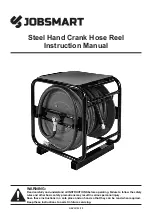
4
SPECIFICATIONS
Max. air pressure: 6.3bar
Air inlet: 1/4"
Air consumption: 3CFM @ 6.3bar
Max. rivet capacity: 3/16"
Stroke length: 9/16"(14mm)
AIR SUPPLY
The recommended air system is shown in fig. 1.
3.1. Ensure that the trigger is in the "Off" position before connecting to the air supply.
3.2. Ensure that the air pressure (90psi) is set correctly.
3.3.
WARNING!
Ensure that the air supply is clean and does not exceed 90psi. Too high an
air pressure and/or unclean air will shorten the life of the riveter due to accelerated wear,
and may cause damage and/or personal injury.
3.4. Drain the air tank daily. Water in the air line will damage the riveter.
3.5. Clean the compressor air inlet filter screen weekly.
3.6. Line pressure should be increased to compensate for unusually long air hoses (over 8
metres). The minimum hose bore should be 10mm and fittings must have the same inside
dimensions.
3.7. Keep hoses away from heat, oil and sharp edges. Check hoses for wear, and make certain
that all connections are secure.
ADJUSTMENTS & OPERATION
WARNING!
Ensure you read, understand and apply the Section 1 safety instructions.
This tool is designed for riveting metal, primarily in workshops and garages. We do not
recommend any other use.
1. Hydraulic oil level:
Disconnect the riveter from the air line.
Hold upside-down and remove the air cylinder cap with the spanner provided.
Remove the air/hydraulic piston assembly (grip exposed nut and pull).
Add hydraulic oil to hydraulic cylinder until level is just below junction with air cylinder,
see fig. 2.
Lightly lubricate the inner wall of the air cylinder.
Replace the air/hydraulic piston assembly and press in as far as it will go.
Fig.1


























